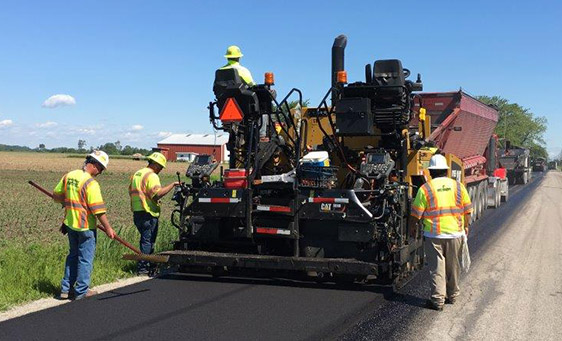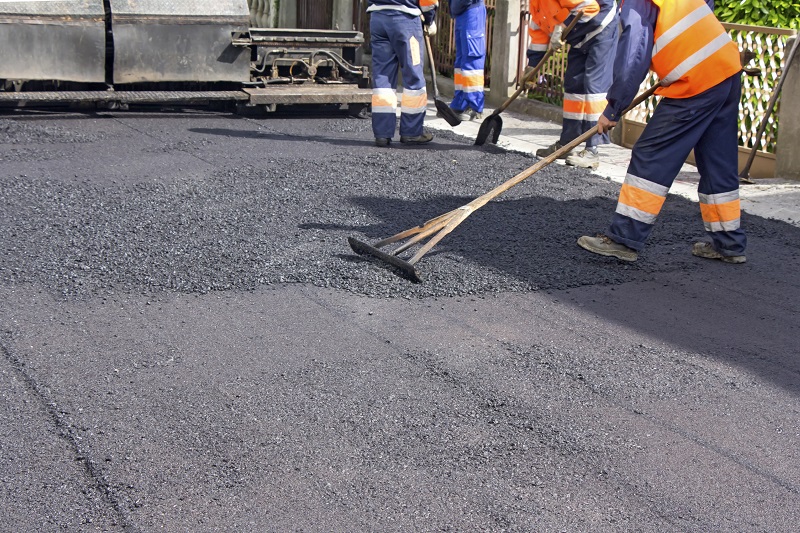Opening the Keys of Warm Mix Asphalt Modern Technology
Exploring the midsts of hot mix asphalt modern technology discovers a world where careful processes and exact solutions assemble to shape our roadways and framework. The blend of accumulations, binders, and fillers isn't merely a building task yet a calculated orchestration of durability and efficiency. As we peer into the intricate dance of components, a tapestry of resilience and sustainability unravels. What lies under this surface area of asphaltic mastery, and what tricks wait to be revealed in the world of leading innovations?
Value of Warm Mix Asphalt
Hot Mix Asphalt plays a critical duty in modern facilities advancement as a result of its toughness and cost-effectiveness. As the most frequently used leading product for roadways, freeways, and car park, Warm Mix Asphalt provides an array of benefits that add to its importance in construction tasks. One key benefit is its ability to hold up against rush hour loads and harsh climate condition, giving a resilient and reliable surface area for transport networks. Additionally, Warm Mix Asphalt is economical in both first building and long-lasting maintenance, making it a preferred choice for lots of infrastructure projects.
The sturdiness of Hot Mix Asphalt originates from its composition, that includes aggregates, binder, and filler materials that are thoroughly selected and mixed to satisfy certain efficiency requirements. This exact combination results in a strong and versatile pavement that can endure constant use without considerable wear and tear. Warm Mix Asphalt is 100% recyclable, more improving its sustainability and ecological advantages. Overall, the significance of Hot Mix Asphalt in infrastructure development can not be downplayed, as it continues to be a keystone of modern-day building practices.
Parts of Asphalt Mixes
The structure of asphalt blends consists of very carefully chosen accumulations, binder, and filler materials that are critical for achieving details efficiency needs. Accumulations are the primary part of asphalt mixes, providing toughness and security. The binder, commonly bitumen or asphalt cement, holds the aggregates with each other and offers versatility and sturdiness to the mix.
The mix and proportion of these elements play a substantial function in figuring out the top quality and efficiency of the asphalt mix. Designers meticulously design the mix to meet certain demands, considering elements like website traffic quantity, climate problems, and sidewalk life expectancy. Appropriate option and harmonizing of aggregates, binder, and fillers are crucial for creating long lasting, durable asphalt pavements.
Combining and Manufacturing Methods

Once the accumulations are selected, the binder, typically asphalt cement, is included in bind the materials together. The binder's high quality and amount significantly impact the mix's toughness, versatility, and resistance to ecological factors. Furthermore, fillers like moisturized lime or Rose city concrete might be incorporated to improve particular qualities of the asphalt mix, such as its workability or dampness resistance.
During manufacturing, the accumulations and binder are best site heated, generally between 250-325 ° F(121-163 ° C ), to promote mixing and ensure proper coating of the accumulations. The blending procedure needs to be complete to attain an uniform mix that promotes the wanted performance qualities of the asphalt. Numerous methods, such as set blending or drum blending, are used to accomplish premium and constant asphalt blends for building and construction jobs.
Elements Affecting Asphalt Performance
Variables influencing asphalt efficiency encompass a variety of variables that affect the resilience, longevity, and overall quality of asphalt pavements. One key element is the high quality of materials utilized in the asphalt mix.

Layout considerations, such as pavement density and drainage, are necessary in making sure the long-term performance of the asphalt sidewalk. By carefully considering these contractors, elements and engineers can optimize asphalt efficiency and boost the service life of pavements.
Sustainable Practices in Asphalt Technology

Additionally, the development you can try this out of warm-mix asphalt (WMA) modern technologies has acquired grip recently. WMA enables the manufacturing and placement of asphalt blends at lower temperature levels contrasted to conventional hot-mix asphalt, causing decreased power intake and greenhouse gas emissions. The usage of permeable asphalt blends can aid reduce stormwater runoff problems by allowing water to penetrate through the sidewalk and into the ground, advertising natural water filtering and recharge procedures. By applying these lasting methods, the asphalt sector can add to building a more resilient and ecologically friendly infrastructure network.
Verdict
To conclude, warm mix asphalt modern technology plays an essential function in modern-day infrastructure development as a result of its sturdiness and cost-effectiveness. By thoroughly stabilizing elements, using appropriate blending strategies, and thinking about numerous factors, engineers can produce top notch asphalt mixes that hold up against hefty web traffic lots and severe climate conditions. Accepting lasting practices, such as utilizing warm-mix innovations and recycled products, better boosts the environmental friendliness of asphalt innovation.
Mixing and production techniques in hot mix asphalt technology include the accurate combination and processing of accumulations, binder, and fillers to develop a high-performance and durable asphalt mix.Variables affecting asphalt efficiency include an array of variables that influence the durability, long life, and overall top quality of asphalt sidewalks. Sustainable techniques in This Site asphalt innovation encompass numerous campaigns intended at lowering the ecological effect of asphalt manufacturing and paving processes. By incorporating redeemed asphalt sidewalk (RAP) and recycled asphalt roof shingles (RAS) into new asphalt blends, the market can significantly lower the consumption of raw products and power, while also lowering landfill waste.
WMA permits for the production and placement of asphalt blends at reduced temperatures compared to standard hot-mix asphalt, resulting in lowered energy usage and greenhouse gas exhausts.